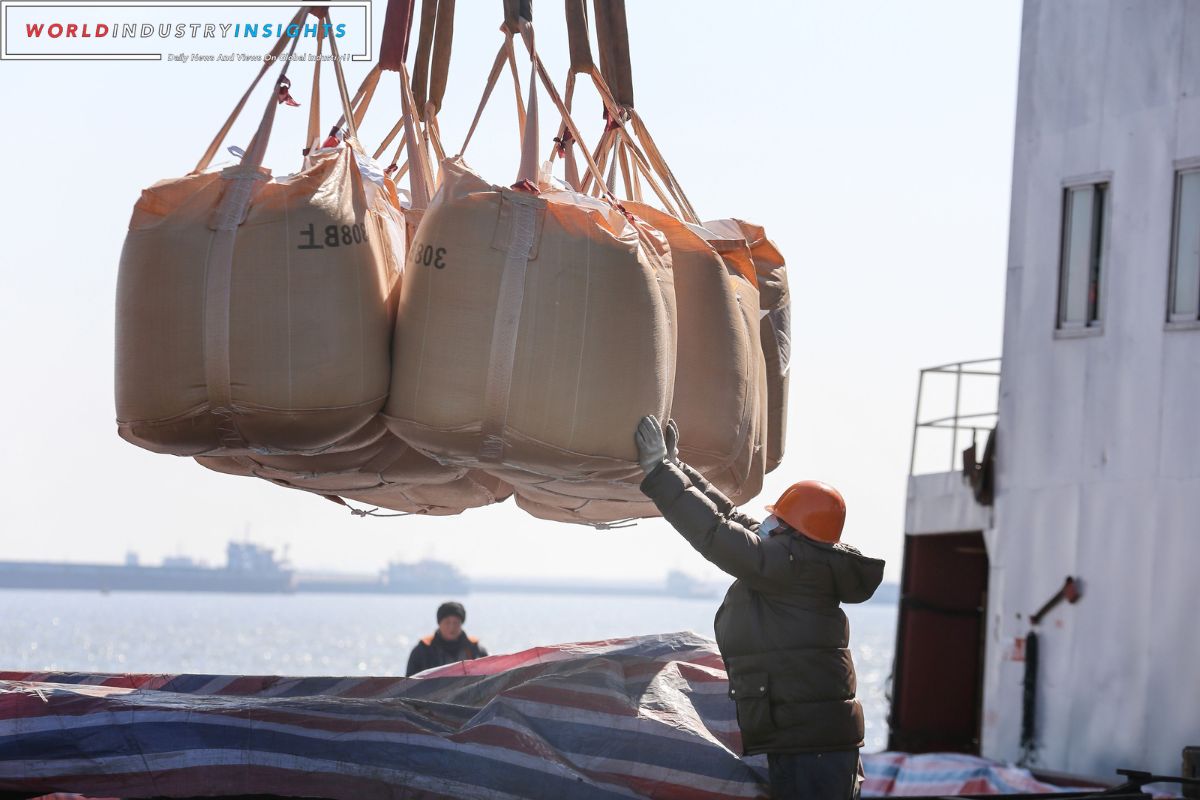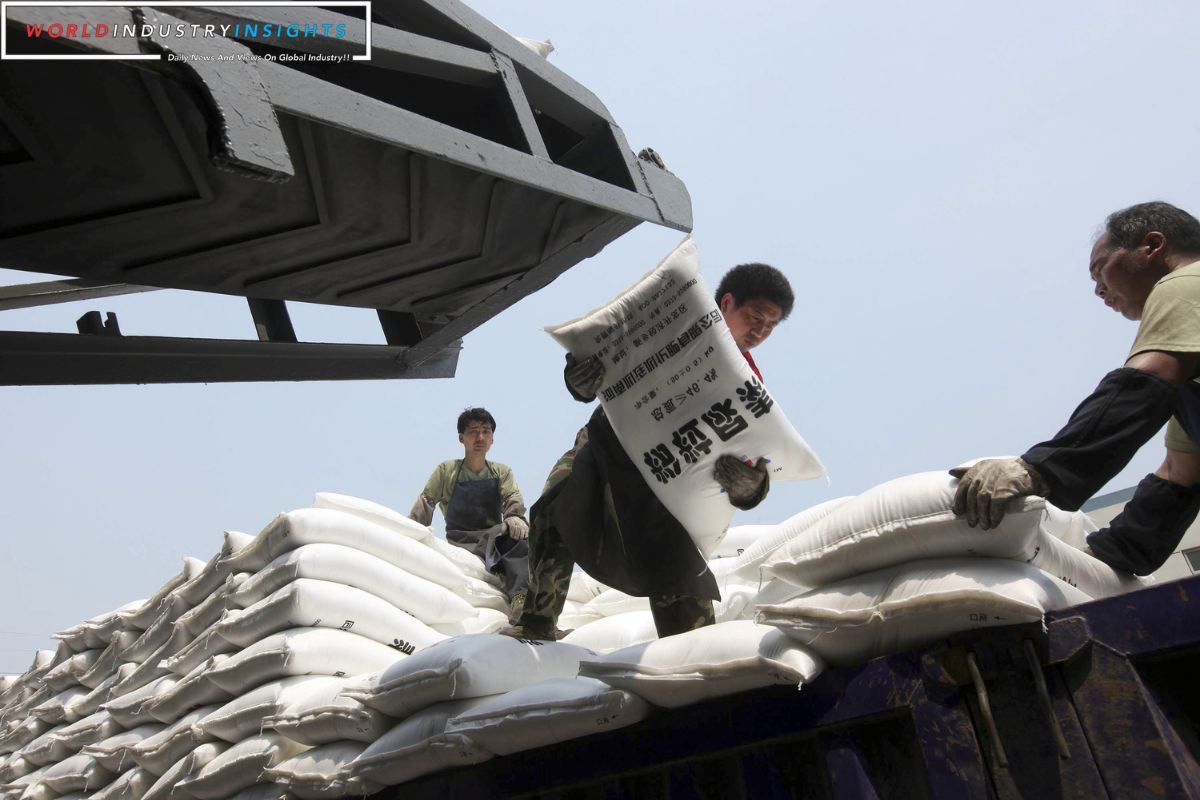Asian Fertilizer Buyers: In the intricate landscape of global fertilizer markets, Asian buyers are strategically recalibrating their sourcing strategies due to mounting concerns over the reliability of China, the world’s primary exporter of phosphate and a significant urea supplier. This shift in dynamics stems from China’s implementation of various measures since 2021, including export quotas and meticulous inspection requirements, aimed at stabilizing domestic fertilizer prices.
Urea exports, a critical component in the global fertilizer trade, experienced a sharp decline of 24% to 2.8 million metric tons in 2022, reflecting the influence of China’s stringent measures. Although this year has seen a modest uptick, the levels remain below the averages observed in preceding years. Phosphate exports, which initially showed robust figures, have also encountered a slowdown in recent months, contributing to a squeeze in global supply and subsequent price surges.
Josh Linville, Director of Fertilizer at brokerage StoneX Group Inc., emphasizes the evolving landscape, stating that China’s growing intervention indicates a diminished reliability as a supplier, projecting potential challenges for market participants in 2024. The conventional market factors are now accompanied by the need to decipher the central government’s intentions, introducing an additional layer of complexity for buyers.
The impact of China’s export restrictions is notably reflected in the price movements of di-ammonium phosphate (DAP), a global benchmark for the industry. Prices have surged by 26% since mid-July, reaching $617.30 per ton, underscoring the volatility introduced by China’s policies.
As the limitations imposed by China ripple through the market, buyers are exploring alternatives to diversify their sources. Countries like Russia, Oman, and the United Arab Emirates have emerged as readily available suppliers, offsetting the reduced shipments from China. The ability to pivot to alternative sources has been crucial for maintaining stability in the face of China-induced uncertainties.
Also Read: Rail Disruptions: Cause Supply Chain Challenges for Chemical Companies in Canada and the US
India, one of the world’s prominent fertilizer buyers, has experienced a 58% decline in Chinese urea exports in the first half of the current fiscal year, prompting a reassessment of its sourcing strategies. Similarly, Malaysian buyers are redirecting their purchases away from China, opting for phosphate from Vietnam and Egypt. South Korea, faced with delays in urea exports from China, is actively diversifying its sources, securing additional supplies from Vietnam and Indonesia to mitigate rising volatility.
Seoul’s move to expand its urea reserve reflects a broader trend among buyers, acknowledging the need for strategic planning in the face of evolving market dynamics. The global fertilizer market finds itself in a state of flux, with participants adapting to the changing landscape influenced by China’s export restrictions.
Analysts anticipate that China’s urea exports in the coming year may witness incremental growth, reaching around 4 million tons. However, the market is expected to grapple with tight shipments in the initial half of the year. To manage the situation, China has called upon 15 major fertilizer trading firms to limit their total exports in 2024 to 944,000 metric tons, with further quotas anticipated for other manufacturers.
Despite the multifaceted challenges introduced by China’s interventions, the global fertilizer market remains resilient, with buyers strategically navigating uncertainties and exploring diverse sources to ensure stability in the supply chain. As the industry braces for potential shifts in the coming year, the ability to adapt and diversify will be pivotal for stakeholders across the fertilizer value chain.
Our Reader’s Queries
Why did China ban fertilizer export?
In an effort to stabilize prices and ensure adequate domestic supplies, a Chinese fertilizer group has requested that its members limit exports and recall any shipped cargoes. This move is part of a larger effort by the nation to restrict the shipment of crop nutrients. By taking these measures, the group hopes to maintain a steady supply of fertilizer within the country and prevent shortages that could negatively impact farmers and consumers alike.
What fertilizer does China import?
China’s primary imported fertilizer is potassium chloride.
Who produces fertilizer in China?
Sinochem Fertilizer is the largest fertilizer company in China, with a comprehensive industrial chain that includes research and development, manufacturing, trading, distribution, retail, and agricultural services. They integrate all aspects of production, making them a one-stop-shop for all your fertilizer needs. With their expertise and experience, Sinochem Fertilizer is the go-to choice for farmers and agricultural businesses in China.
Where does India import fertilizers from?
India is heavily reliant on China, United Arab Emirates, and Spain for its fertilizer imports, making it the third largest importer of fertilizer globally. Vietnam takes the lead with 57,813 shipments, followed by the United States with 51,599, and India with 44,543 shipments.


